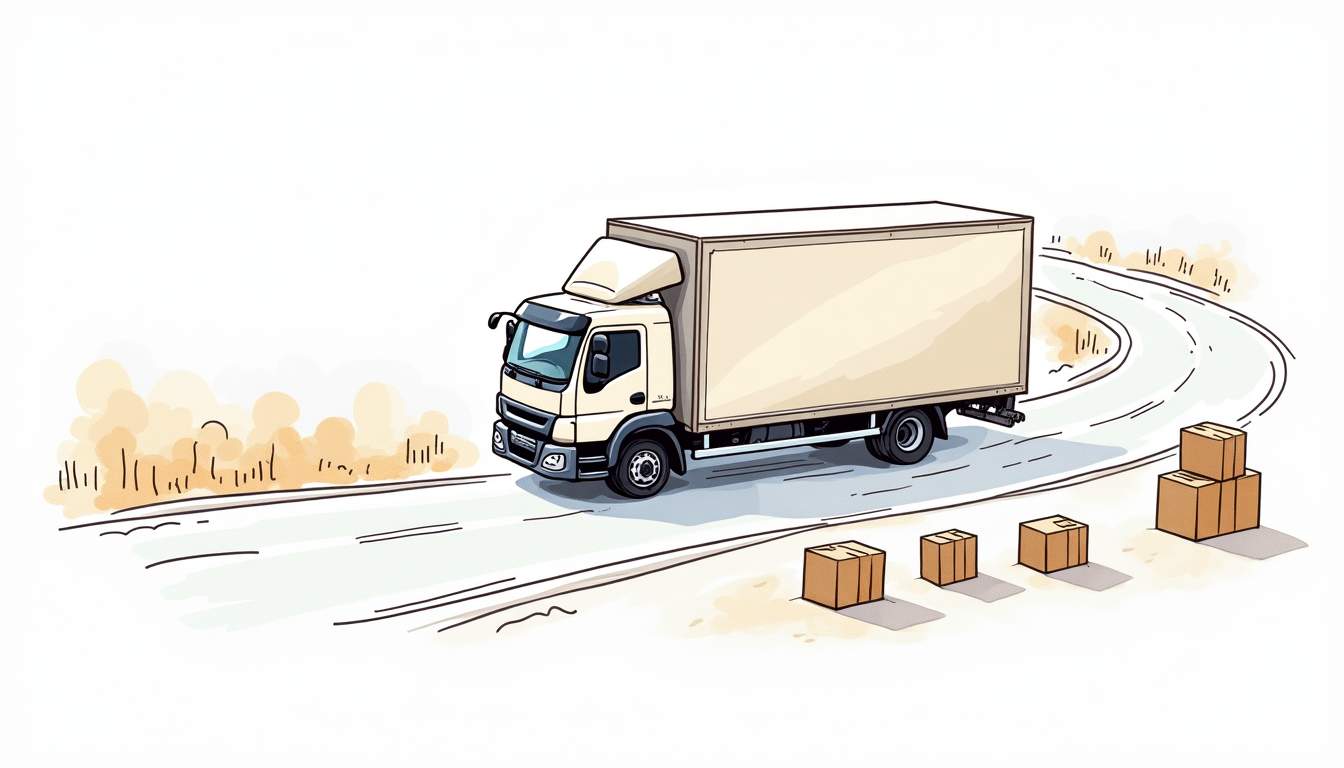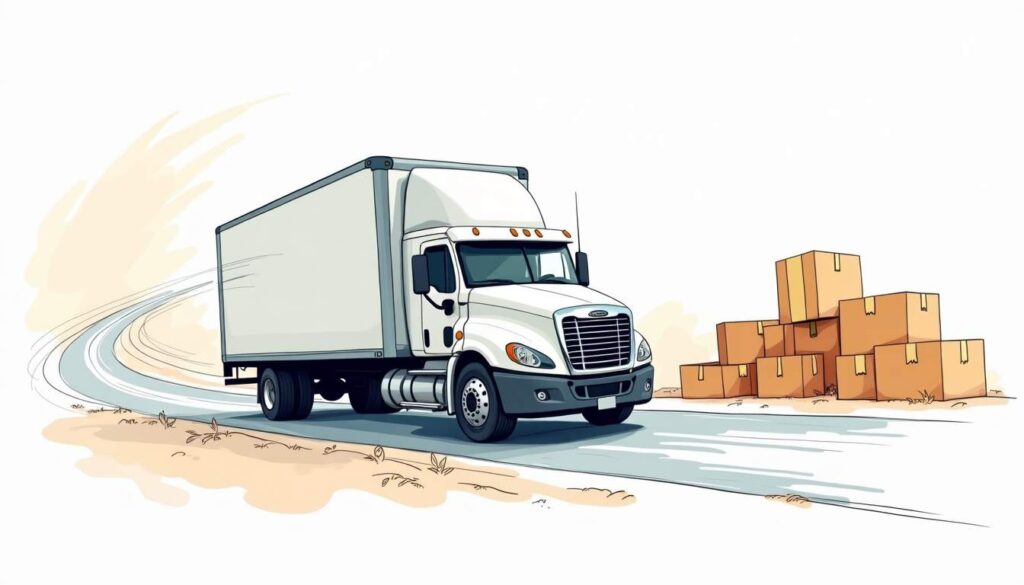Moving to a new home is often a stressful and time-consuming process. For many, the goal is to get everything done as quickly as possible without compromising on the safety of belongings or the quality of service. Speed in moving is not just about convenience—it can significantly impact costs, customer satisfaction, and overall efficiency. Thanks to advancements in technology, particularly artificial intelligence (AI), moving companies are now able to optimize their operations and deliver faster services without sacrificing quality. This article explores why speed matters in moving and how AI-driven solutions are revolutionizing the industry.
The Importance of Speed in the Moving Industry
Time is a critical factor when it comes to moving. On average, a typical residential move takes about eight hours to complete, which can feel like an entire day of disruption for families and individuals. Reducing this time can alleviate stress and help clients settle into their new homes faster. The emotional toll of moving—often ranked among life’s most stressful events—can be mitigated when the process is streamlined. Families can focus on unpacking and creating a comfortable environment rather than worrying about logistics and timelines.
Speed also directly affects the bottom line for moving companies. Faster moves mean more jobs completed in a day, which can increase revenue. The U.S. moving industry itself generates approximately $17 billion annually, highlighting the scale and economic significance of efficient moving services. Companies that can deliver quicker, reliable moves stand to gain a competitive edge in this lucrative market. This is particularly relevant in urban areas where demand for moving services can fluctuate dramatically, and the ability to adapt quickly can make or break a business. Furthermore, customer satisfaction often hinges on the speed of service, leading to repeat business and referrals, which are invaluable in the service industry.
Moreover, faster moves reduce the risk of damage or loss. The less time belongings spend in transit or handling, the lower the chance of accidents. This balance between speed and care is essential to maintaining high-quality service standards. Many moving companies have adopted best practices that emphasize both efficiency and safety, such as using specialized packing materials and training staff in proper lifting techniques. These measures not only protect the client’s possessions but also enhance the company’s reputation for reliability and professionalism.
Technological advancements have played a pivotal role in improving speed without compromising quality. For instance, AI-driven route optimization has been shown to reduce delivery times by an average of 20%, allowing movers to plan more efficient routes and avoid delays. Additionally, the use of mobile apps for real-time tracking provides clients with updates on their move, enhancing transparency and trust. Innovations such as automated inventory systems help movers keep track of items more efficiently, ensuring that nothing is left behind or misplaced during the hectic moving process. As the industry continues to evolve, embracing new technologies will be crucial for companies aiming to stay ahead in a competitive landscape.
How AI is Transforming Moving Speed and Efficiency
Artificial intelligence is no longer a futuristic concept but a practical tool that moving companies are leveraging to enhance their services. One of the most impactful applications of AI is in route optimization. By analyzing traffic patterns, road conditions, and delivery schedules, AI algorithms can map out the fastest and most fuel-efficient routes.
This optimization not only cuts down delivery times but also reduces fuel costs by 10-15%, a significant saving for companies operating large fleets. These savings can be passed on to customers or reinvested into improving service quality. Moreover, the ability to predict and adapt to changing traffic conditions in real-time means that moving companies can maintain a competitive edge, ensuring that they meet customer expectations even during peak moving seasons.
Another AI-driven innovation is predictive maintenance. Moving trucks and equipment are subject to wear and tear, and unexpected breakdowns can cause costly delays. AI-powered predictive maintenance systems analyze vehicle data in real-time to predict when parts might fail, allowing companies to perform maintenance before a breakdown occurs. This approach can reduce downtime by up to 30%, ensuring that moving operations run smoothly and on schedule. By integrating sensors and IoT technology, these systems can provide detailed insights into vehicle health, allowing for more informed decision-making regarding fleet management and resource allocation.
Additionally, AI-powered chatbots are enhancing customer service by providing instant responses to inquiries, scheduling assistance, and real-time updates. This technology has improved customer satisfaction rates by 15% in the moving sector, helping companies maintain strong client relationships even during busy periods. The use of natural language processing allows these chatbots to understand and respond to customer queries more effectively, creating a seamless communication experience that empowers clients with the information they need at their fingertips.
Real-Time Tracking for Greater Accuracy
One of the challenges in moving is keeping customers informed about the status of their belongings. AI-driven real-time tracking systems provide transparency by allowing clients to monitor their shipments live. This technology has improved delivery accuracy rates by 25%, reducing missed appointments and enhancing trust between movers and customers. The integration of GPS and mobile technology means that clients can receive updates directly on their smartphones, ensuring they are always in the loop regarding the location of their items.
With real-time tracking, companies can quickly respond to unexpected delays or reroute shipments as needed, further contributing to faster and more reliable moves. This capability not only enhances operational efficiency but also builds customer confidence, as clients feel more secure knowing they can track their belongings at any moment. Furthermore, the data collected from these tracking systems can be analyzed to identify patterns and trends, enabling moving companies to refine their processes and improve service delivery over time.
Balancing Speed with Quality: Best Practices for Moving Companies
While speed is important, it should never come at the expense of quality. Moving companies must strike a careful balance to ensure that belongings are handled with care, and customer expectations are met or exceeded.

One effective strategy is leveraging virtual moving estimates. The use of virtual estimates increased by 25% during the COVID-19 pandemic, allowing companies to provide accurate quotes without the need for in-person visits. This not only speeds up the booking process but also helps customers plan their moves better, reducing last-minute surprises.
Training and empowering staff with the right tools is equally crucial. When movers have access to AI-optimized schedules and routes, they can focus on careful handling and customer service rather than logistical headaches. This combination of technology and human expertise ensures that moves are both fast and high-quality.
Furthermore, companies should invest in continuous feedback loops, using AI to analyze customer reviews and operational data to identify areas for improvement. This proactive approach helps maintain high standards while streamlining processes.
Looking Ahead: The Future of Speed in Moving
The integration of AI and other emerging technologies promises to further transform the moving industry. As AI algorithms become more sophisticated, we can expect even greater reductions in delivery times and operational costs, alongside improvements in service quality.
For customers, this means faster, more reliable moves with better communication and fewer hassles. For moving companies, it represents an opportunity to innovate, differentiate, and grow in a competitive market.
Ultimately, speed in moving is about more than just saving time—it’s about enhancing the entire moving experience. By embracing AI-driven solutions and best practices, the moving industry can deliver faster services without ever compromising the quality that customers expect and deserve.
For more insights on how AI is reshaping the moving industry, visit ZipDo’s research on AI in moving.




